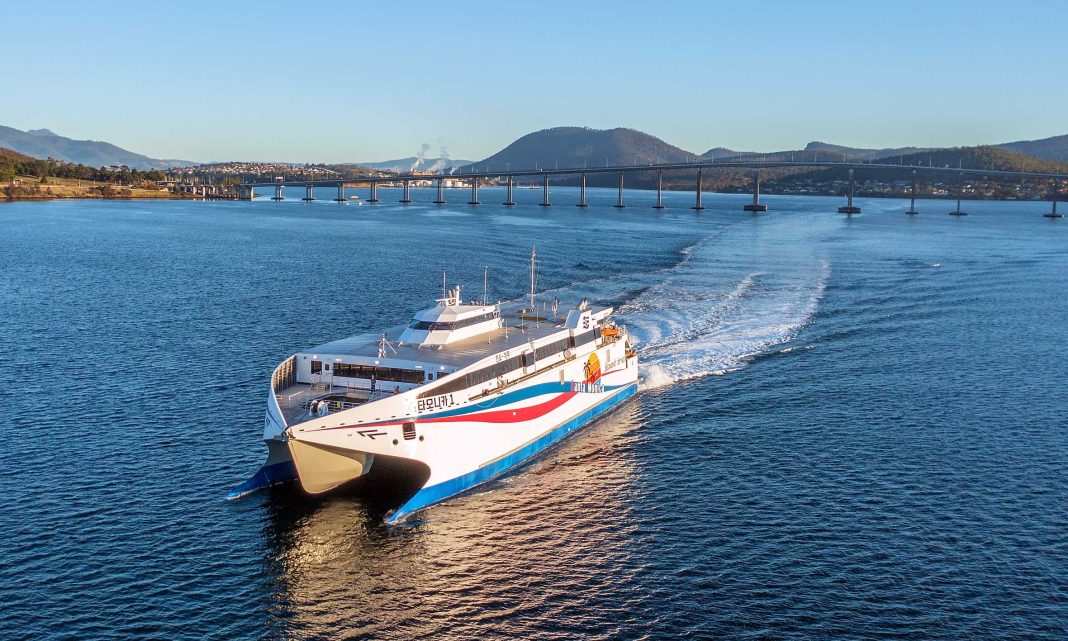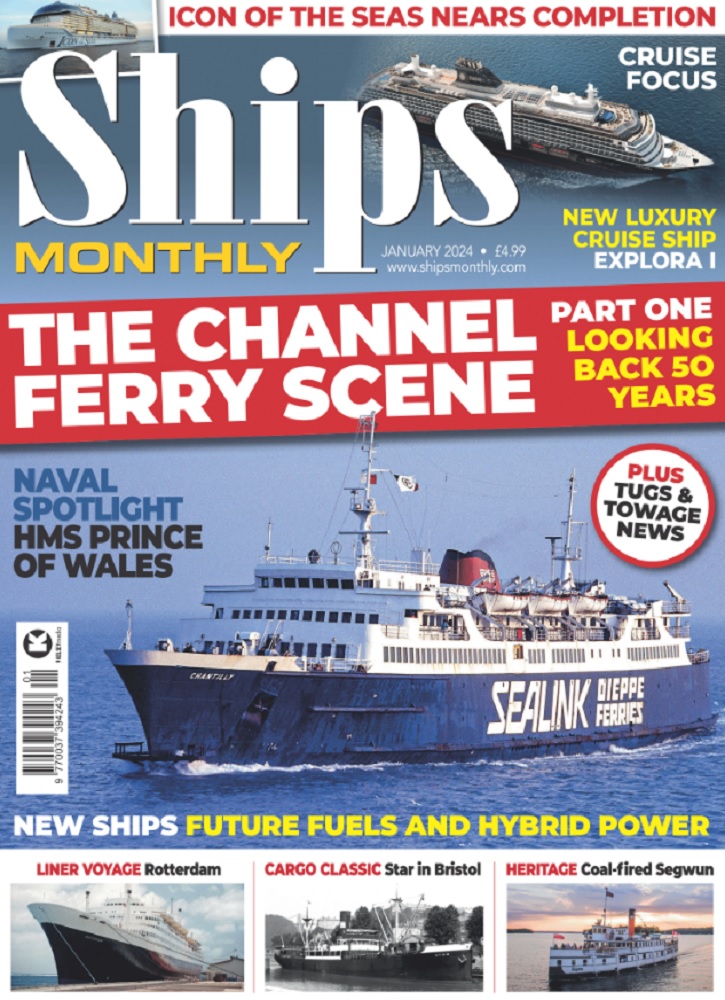Australian high speed craft specialist Incat Tasmania is breaking new ground with its latest high speed catamaran, a 76m fast ferry for Seaworld Express Ferry of South Korea.
Just as Incat led the way with the world’s first car-carrying high speed catamarans in the pioneering 74m and 78m fast ferries of the early 1990s, this new 76m vessel will be the high-speed craft market frontrunner in terms of economy, seakeeping and comfort for vessels of its size.
Capable of accommodating 621 passengers and crew and 86 cars at speeds of over 40 knots, Santa Monica 1 features Incat’s tried and proven evolved hull form with its new centre-bow arrangement, reflecting over thirty years of experience building market-leading high speed vehicle-passenger ferries.
With a significant improvement to both waterline length and vessel trim compared with those early 74m and 78m craft, together with a Motion Control System, the Incat 76m catamaran benefits not only from vastly improved speed and fuel consumption but also provides a smoother ride and an enhanced onboard experience for both passengers and crew.
Designed by Revolution Design the Santa Monica 1 is a truly fast vessel, achieving a maximum speed of 49.7 knots on sea trials. Contractual speed of 42 knots with 100 tonnes deadweight aboard was achieved with a margin in excess of five knots.
Build lighter and stronger has always been a mantra at Incat where Chairman and Founder Robert Clifford points out that aluminium is one third the weight of steel.
The ability to build strong aluminium structures at lowest weight means the vessel requires less power, consumes the lowest possible amount of fuel, and delivers the most efficient solution to meet operator requirements.
On board Santa Monica 1 passengers can enjoy an abundance of natural light in spaces featuring high quality carpet, durable timber-look walkways, stainless steel fittings and tasteful wall panelling.
All passenger facilities are situated on one deck fitted out for 606 passengers with 72 executive seats and 98 reclining seats in the forward business class lounge, 232 seats midships and 204 seats in the aft cabin, all supplied by Beurteaux.
A services block separates the forward and midship sections and houses male and female toilets, a crew mess and a centrally located servery, food preparation area and bar.
Finished with stainless steel and glass cabinets to display hot and cold meals, drinks and desserts the servery is bounded by wide corridors either side allowing customers easy viewing and access while preventing crowding and long lines.
Evacuation facilities for passengers and crew on board Santa Monica 1 comprise four Liferaft Systems Australia Marine Evacuation Stations, two port and two starboard. Each can serve up to a total of 200 persons.
As with all large Incat vessels the superstructure, Tier 2 and above, is an independent structure, connected to the hull via rubber isolation mounts, for optimum noise and vibration performance.
Vehicles are handled via a vessel-mounted ramp at the stern. Car space sizes are 4.50m x 2.30m while commercial vehicle lanes on the main vehicle deck are 3.10m wide and have a clear height of 3.5m. Maximum loads are 5 tonnes for single axle, dual wheel.
The use of extensive lighting and apertures at the foredeck and stern provide a high level of natural light and air movement through the vehicle deck and is enhanced by the light tones of rapid access composite Structural Fire Protection provided by Ayres.
All vertical structural steel members are painted bright yellow so obstructions to vehicles or passenger movement are easily identified.
Situated atop the passenger deck, Santa Monica 1’s wheelhouse features the latest navigation, monitoring, and control equipment. A dedicated docking station, 360-degree views and CCTV deliver a high level of safety and control during voyages and docking.
The vessel offers views from raised helm seating, with all instruments fitted in dark grey and black consoles to aid night vision and minimise distraction. A separate ship’s office and lounge is located aft of the bridge where crew can lay-out charts, plan voyages or relax from day-to-day activities.
High levels of operability are key and nowhere is this more evident than in Santa Monica 1’s spacious machinery rooms. The craft is equipped with four Caterpillar C280-16 engines which each deliver 5,650kW at 100% MCR. Each engine drives a steerable Kongsberg Kamewa S90-4 waterjet via a Reintjes VLJ 4431 gearbox.
Four Caterpillar C7.1 generators rated at 200 ekW each and 380V, 60Hz, supply electrical power.


